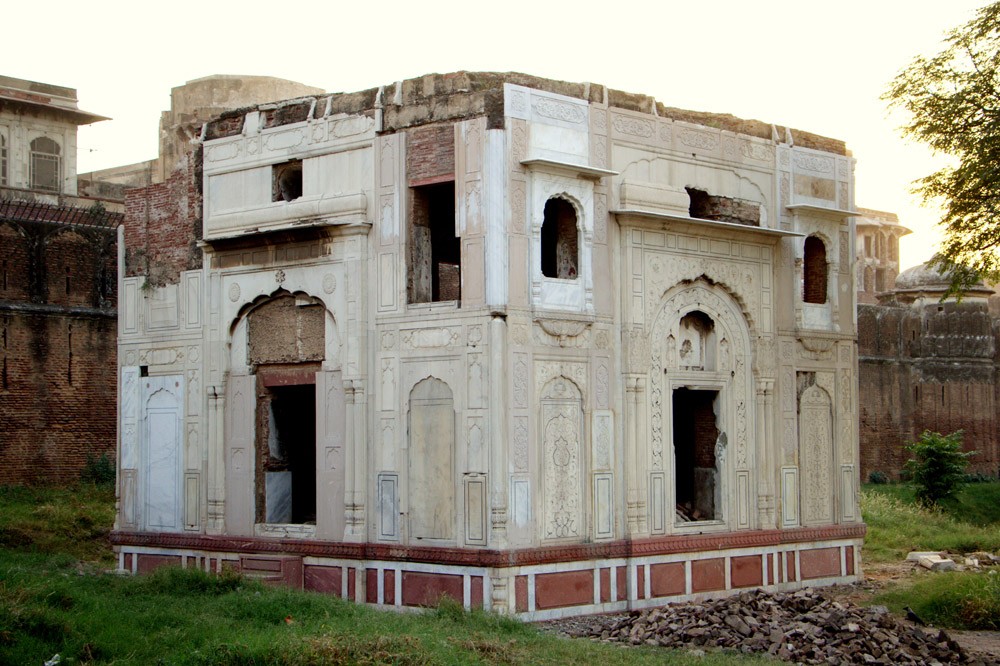
The Sikh samadhi of Bhai Vasti Raam, a renowned 18th century herbal healer

This is about a monument which is apparently ‘protected’ under the law, by the government of Pakistan. From a distance, it’s a ruin -- a smallish, crumbling piece of olden architecture; its white marbles turned ash grey. It is the Sikh shrine (or Samadhi) of Bhai Vasti Raam, a renowned 18th century herbal healer.
Bhai Vasti Raam’s charitable deeds are a legend. He would give free treatment to his patients. Besides, he was known to have special healing powers. No wonder he was visited, among others, by the Sikh chiefs of the time. Maharaja Ranjit Singh was one of these important people who became a devoted follower of him. Ranjeet Singh often attributed his successes in the many battles he fought to Bhai Vasti Raam’s blessings, especially in the battle of Bhasin (1800) which made him the master of Lahore.
Bhai Vasti Raam was witness to several persecutions of the Sikhs till the latter’s rise to political power in the Punjab, especially Lahore. He died, at the age of 94, in the year 1802. A marble Samadhi was built in his honour, outside the Lahore Fort, at the spot where he was cremated. Maharaja Ranjit Singh visited the Samadhi on all special occasions, especially on Bhai Vasti Raam’s death anniversary.
Aside from the glorious history attached to the monument, the Samadhi of Bhai Vasti Raam was hailed for its architectural grace. Although it was set against the majestic wall of Lahore Fort, it still captured the attention of the visitors because of the white marble stones.
I am told by a historian friend that the marble had an inlay of multihued, semiprecious stones in floral patterns. The main door of the Samadhi opened to a square podium. According to Kanhaiya Lal, there used to be a fountain tank right in front of the podium; however, it no longer exists.
Unfortunately, the Samadhi of Bhai Vasti Raam, along with Jain Mandir, had to face the wrath of a fuming mob in the wake of the alarming incident of the Babri Mosque in India in 1992. The mob tried to burn it down, causing severe damage to the Samadhi in the process.
Today, the place is not even a shadow of its original self. It even looks like it has not been cleaned for ages. So much for a ‘protected’ monument!
One hears that a fair amount of budget was allocated to the Punjab Archaeology Department for the conservation/restoration of the Samadhi but no one knows what happened afterwards.
It is also believed that conservation work began as recently as in 2014 and was to be completed in two years’ time. Till date, there’s no sign of any such work in process. All you find at the Samadhi are drug addicts vandalising the place.
However, signs of a gold-plated ceiling having come off are definitely visible. No one knows if these shall be preserved in a museum as relics or become part of some bureaucrat’s home décor.